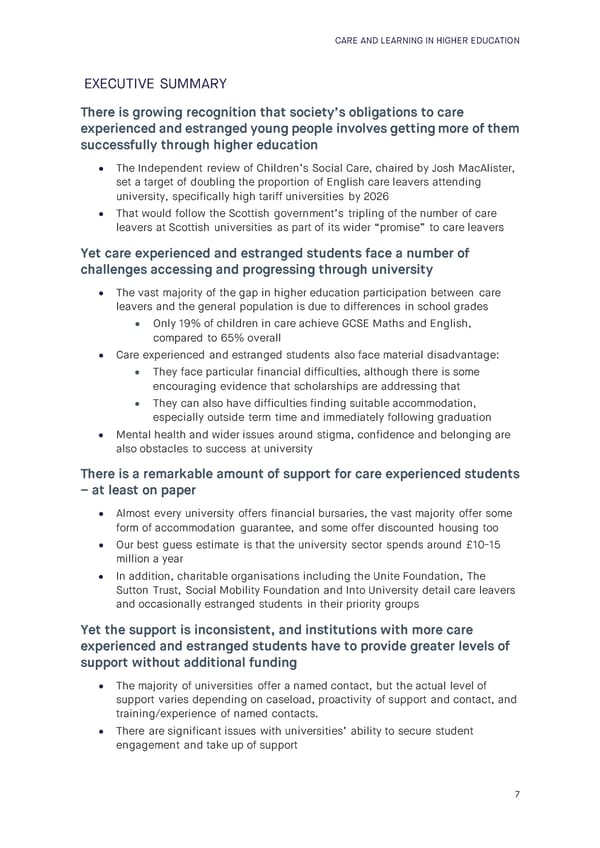CARE AND LEARNING IN HIGHER EDUCATION EXECUTIVE SUMMARY There is growing recognition that society’s obligations to care experienced and estranged young people involves getting more of them successfully through higher education • The Independent review of Children’s Social Care, chaired by Josh MacAlister, set a target of doubling the proportion of English care leavers attending university, specifically high tariff universities by 2026 • That would follow the Scottish government’s tripling of the number of care leavers at Scottish universities as part of its wider “promise” to care leavers Yet care experienced and estranged students face a number of challenges accessing and progressing through university • The vast majority of the gap in higher education participation between care leavers and the general population is due to differences in school grades • Only 19% of children in care achieve GCSE Maths and English, compared to 65% overall • Care experienced and estranged students also face material disadvantage: • They face particular financial difficulties, although there is some encouraging evidence that scholarships are addressing that • They can also have difficulties finding suitable accommodation, especially outside term time and immediately following graduation • Mental health and wider issues around stigma, confidence and belonging are also obstacles to success at university There is a remarkable amount of support for care experienced students – at least on paper • Almost every university offers financial bursaries, the vast majority offer some form of accommodation guarantee, and some offer discounted housing too • Our best guess estimate is that the university sector spends around £10-15 million a year • In addition, charitable organisations including the Unite Foundation, The Sutton Trust, Social Mobility Foundation and Into University detail care leavers and occasionally estranged students in their priority groups Yet the support is inconsistent, and institutions with more care experienced and estranged students have to provide greater levels of support without additional funding • The majority of universities offer a named contact, but the actual level of support varies depending on caseload, proactivity of support and contact, and training/experience of named contacts. • There are significant issues with universities’ ability to secure student engagement and take up of support 7
 Care and Learning in Higher Education Page 7 Page 9
Care and Learning in Higher Education Page 7 Page 9